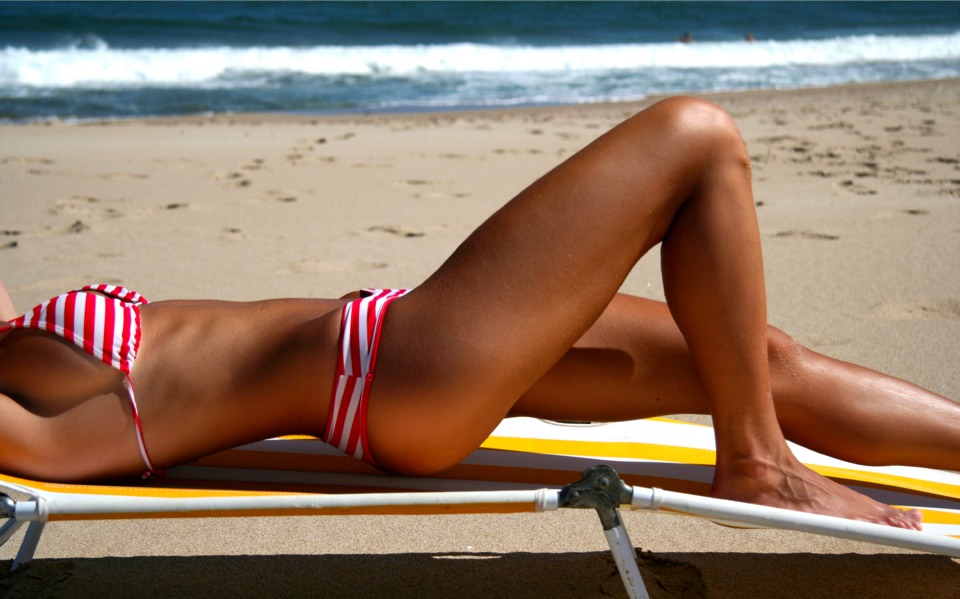
Having a sun-kissed, golden complexion is a popular desire among the masses in the UK, especially teens who are increasingly using sun-beds and self tanning methods to become darker skinned. While having a tan can be aesthetically pleasing and portray a fit and healthy body; we must realise the fundamental fact that tanning is damaging to the skin and can lead to aged skin, burns, and skin cancer. This article aims to suggest ways in which you can tan in the safest way possible, if you do decide to sit out in the sun or use sun-beds.
Tanning and UV radiation
Although a tan may look healthy and attractive, it is in fact a sign that the skin has been damaged. A sun tan is developed when the skin absorbs UV (ultraviolet) radiation from the sun rays, causing the skin to darken due to higher levels melanin. The darkened skin therefore becomes less prone to burning at the same level of UV exposure.
A higher level of UV radiation results in a higher risk of skin burning and damage. You can usually find out what the level of UV radiation is likely to be by looking at the weather forecast which should show the UV Index. The index starts at 0 and goes to 10+, with a higher index rating indicating a higher level of UV radiation. The BBC Weather Centre web site has a great explanation of the UV Index.
Difference between sun block and sun screen
Sun screens have a Sun Protection Factor (SPF) which can range from 4 upwards. The higher the SPF, the greater protection you will achieve. Dark skinned people and those which do not burn may find a low SPF is suitable for their needs, but it is worth noting most skin experts recommend a sun screen with a SPF of at least 15 so you limit your risk of skin damage. Pale skinned people and those prone to burning may wish to opt for a much higher SPF, such as 35-40.
Sun screen will not prevent you tanning; it will offer some protection so you avoid sun burn and excessive skin damage. This is assuming you pick a sun screen with a suitable SPF, however.
Sun block is different to sun screen – as its name suggests, sun block is designed to avoid any skin damage by totally blocking UV radiation (and therefore tanning).
Sunburn and further tanning precautions
It is a myth that sunburn will fade into a tan. Sunburn is visible damaged blood vessels on the surface of the skin, and should be avoided at all costs due to the risks involved. Sunburn can lead to sun spots, skin inelasticity, and skin cancer. So, how can we avoid sun burn?
- Use a suitable sun screen (see above for information regarding SPF)
- Sun screen should be re-applied every twenty minutes and make sure the sun screen is waterproof. Remember the risks remain when you are in water.
- Avoid the sun when it is excessively high in UV radiation (check the UV Index)
- Wear suitable sun glasses which block out UV rays to avoid eye damage
- Do not tan for excessive periods of time, and avoid sleeping in the sun
- Get out of the sun and apply after-sun cream if you are turning red or feel your skin burning.